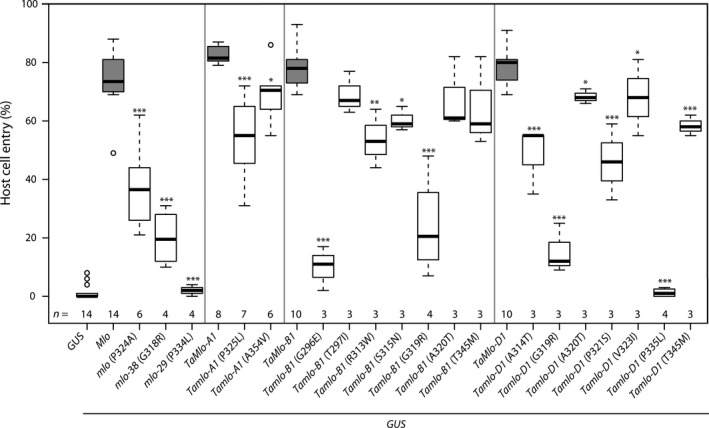Figure 2.

TILLING‐derived variants of Tamlo homoeologues exhibit different levels of functionality in a transient gene expression assay. Detached 8‐day‐old leaves of the powdery mildew‐resistant barley mlo‐3 mutant were co‐bombarded with a GUS reporter plasmid and a plasmid encoding the indicated TaMlo protein variant (WT or mutant version under transcriptional control of the maize Ubiquitin1 promoter). Expression of GUS alone and GUS plus WT barley Mlo, driven by the maize Ubiquitin1 promoter, were used as negative and positive controls, respectively, for restoration of Bgh susceptibility. Host cell entry was scored at 48 hours post inoculation (h p.i.) in GUS‐stained cells attacked by powdery mildew sporelings and results visualized as box plots. Centre lines show the medians; upper and lower box limits indicate the 25th and 75th percentiles respectively; upper and lower whiskers extend 1.5 times the interquartile range from the 25th and 75th percentiles, respectively, and outliers are represented by dots. Numbers at the bottom of the boxplots indicate the number of biological replicates per sample (n). One biological replicate was typically composed of six leaves with 150 scored cells. Asterisks indicate a statistically significant difference to the respective WT (barley Mlo or TaMlo) with ***P < 0.001, **P < 0.01 and *P < 0.5 as determined by a Generalized Linear Model (GLM) test. Statistics were performed and boxplots generated with R software.
